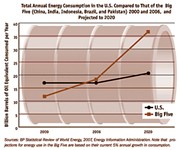Not a Drop to Drink
Comal Springs Is Drying Up
By Robert Bryce, Fri., July 12, 1996
Which is to say that it was a typically hot summer day in July. And New Braunfels, being the best place to cool off for miles around, was the best place to be. But if the drought continues as expected, New Braunfels will soon be just like any other overheated Texas town. Comal Springs, which provides most of the water for the city's visitors, is expected to go dry within the next couple of weeks. And when it does go dry, hydrologists believe that if the drought continues, it may stay dry for several years.
Few of the visitors seemed to know or care about the fate of the springs. The water is still flowing, albeit at a much lower rate. On July 2, the water from the various springs was flowing at 94 cubic feet per second, about one-third of the normal flow rate. The main outlet at Comal Springs -- the one next to the sign proclaiming them the largest springs in the Southwest -- was dry. Every 30 minutes or so, a handful of visitors walked up to the lifeless hole in the rock, shuffled around for a few seconds, and then walked away.
It's been 40 years since Comal Springs last went dry. But the drought of the 1950s dragged on for more than half a decade before the springs finally stopped flowing. The current drought has lasted a bit more than a year, and already it appears that Comal is doomed. Simply put, too many people are pumping water from the Edwards Aquifer -- the source of the springs' flow.
On June 11, the Sierra Club filed a class action suit in federal court under the Endangered Species Act against the City of San Antonio and nearly 1,000 other users who pump water from the aquifer. The environmental group insists that pumping limits are needed to protect five federally protected endangered species that rely on Comal and another spring fed by the aquifer -- the San Marcos.
The Sierra Club, represented by local attorney Stuart Henry, has been trying to impose pumping limits on the aquifer since 1991, when it filed suit against then Interior Secretary Manuel Lujan. That suit dragged on for five years without a clear winner. Now, the group is hoping to get a temporary restraining order that will immediately impose limits on everyone who pumps water from the Edwards.
In the meantime, biologists are rescuing spring-dwelling endangered species, including Texas Wild Rice, the Texas Blind Salamander, the San Marcos Salamander, San Marcos Gambusia, and the Fountain Darter. More than 40 other rare species, including blind catfish and a slew of unique invertebrates, also depend on the Edwards and are in danger of being lost. The scientists hope to collect as many of the species as possible before the springs go dry. They will keep them in tanks at fish hatcheries in San Marcos and Uvalde.
The ongoing fight over the Edwards Aquifer has pitted property-rights advocates against environmentalists, agricultural users against city dwellers, and recreational interests against downstream industries. And while each of these factions fights for their share of the water, few people are discussing the intrinsic value of the springs themselves. If the springs go dry and stay dry, we will have lost more than a handful of endangered species, we will have lost an important part of our cultural identity.
Springs like Comal, San Marcos, and Barton represent the wild. And they are the last remnants of wildness left in Texas. The forests have been cut. The plains have been fenced and plowed. The coast has been dredged and developed. The rivers have been dammed. The springs, however, retain their essential quality. They are a primordial vestige in a world where modernity has invaded almost every facet of the landscape.
Texas' springs are sacred places. They give life in a region where water is scarce. They are the meeting place between the surface and the underworld. They are a place to ponder the mystery of the earth. And they are rapidly disappearing. Half of Texas' springs have gone dry, victims of our lust for water.
Forgive me if I wax rhapsodic. I have reported on the controversies surrounding Barton Springs, Comal Springs, and San Marcos Springs for more than six years. I have recounted all the facts and statistics. I have seen the different species, photographed them, read studies of them. The facts are interesting. They are compelling. But they are -- forgive the pun -- dry. As I swam in Barton Springs the other night, I realized I had been missing the story. I had been concentrating on the politics, on the need to do away with the rule of capture, the archaic law that has allowed the southern section of the Edwards Aquifer to teeter on the brink of extirpation for more than a decade. The issue about Comal, San Marcos, and the Edwards Aquifer is larger than politics.
Glenn Longley, the director of the Edwards Aquifer Research and Data Center at Southwest Texas State University in San Marcos, says that if the drought continues, he expects San Marcos Springs to also go dry. And it makes him remember his childhood. "We used to go to Comanche Springs in Fort Stockton and swim in the springs," he said. "And frankly that was a real joy to us. There was a lot of benefit to seeing the water come to the surface."
Of course, Comanche Springs have been dry for years, killed by overpumping. And Longley believes the same will happen here in Central Texas. "I'm not even guardedly hopeful," he said.
And that is the issue. Springs are about hope. They are about birth and rejuvenation. If Comal and San Marcos Springs go dry, New Braunfels and San Marcos will wither. We will have lost the best places to cool off during the dog days of July. And unfortunately, we will have yet another example of our failure to care for the earth.
Woe to the Weevil?
The Texas Legislature created a boll weevil program in 1993, allowing the Texas Boll Weevil Eradication Foundation (TBWEF) to collect assessments from farmers for a statewide pesticide application program. In 1995, the Lege gave the Boll Weevil Eradication Board governmental immunity from any liability caused by the eradication effort. Later in 1995, say farmers in the two areas where the foundation sprayed for weevils, secondary pests invaded and wiped out most of the cotton crop. Two entomologists from the U.S. Department of Agriculture pinned much of the blame for the disaster on the widespread use of malathion. Then, last month, a state district court judge in Plainview issued a preliminary ruling that the whole thing may have been unconstitutional from the get-go.On June 6, Marvin Marshall, a state district court judge in Plainview, tossed a spanner in the works. In a letter to the attorneys in the case known as Eddie Lewellen, et al. v. Texas Boll Weevil Eradication Foundation, Inc., Marshall said that the plaintiff's motion for summary judgment "challenging the constitutionality" of the program's funding mechanism "should be and is hereby granted."
Thus, Marshall apparently agrees with the plaintiffs that assessments levied by TBWEF on cotton acreage to pay for the program were in fact an occupation tax on farmers, which is forbidden by Article 8 of the Texas Constitution: "Persons engaged in mechanical and agricultural pursuits shall never be required to pay an occupation tax."
However, Marshall, who has been hospitalized in Lubbock with a heart ailment, hasn't entered a final order on his ruling. And until he does, TBWEF and Texas Agriculture Commissioner Rick Perry, one of the program's biggest supporters, are holding their breath. Tim Leifeste of TBWEF said, "We will have no comment until the judge signs the order, if and when that occurs."
Many farmers are saying they won't pay their assessments to TBWEF until the issue is resolved. "It's unconstitutional and we've known that for a long time," says Tommy Applewhite, a grower in Cotton Center who has planted about 1,000 acres of cotton. And if the program is unconstitutional, he asked, "Isn't that enough to keep you from paying for it? That's how we look at it." n
Got something to say on the subject? Send a letter to the editor.








